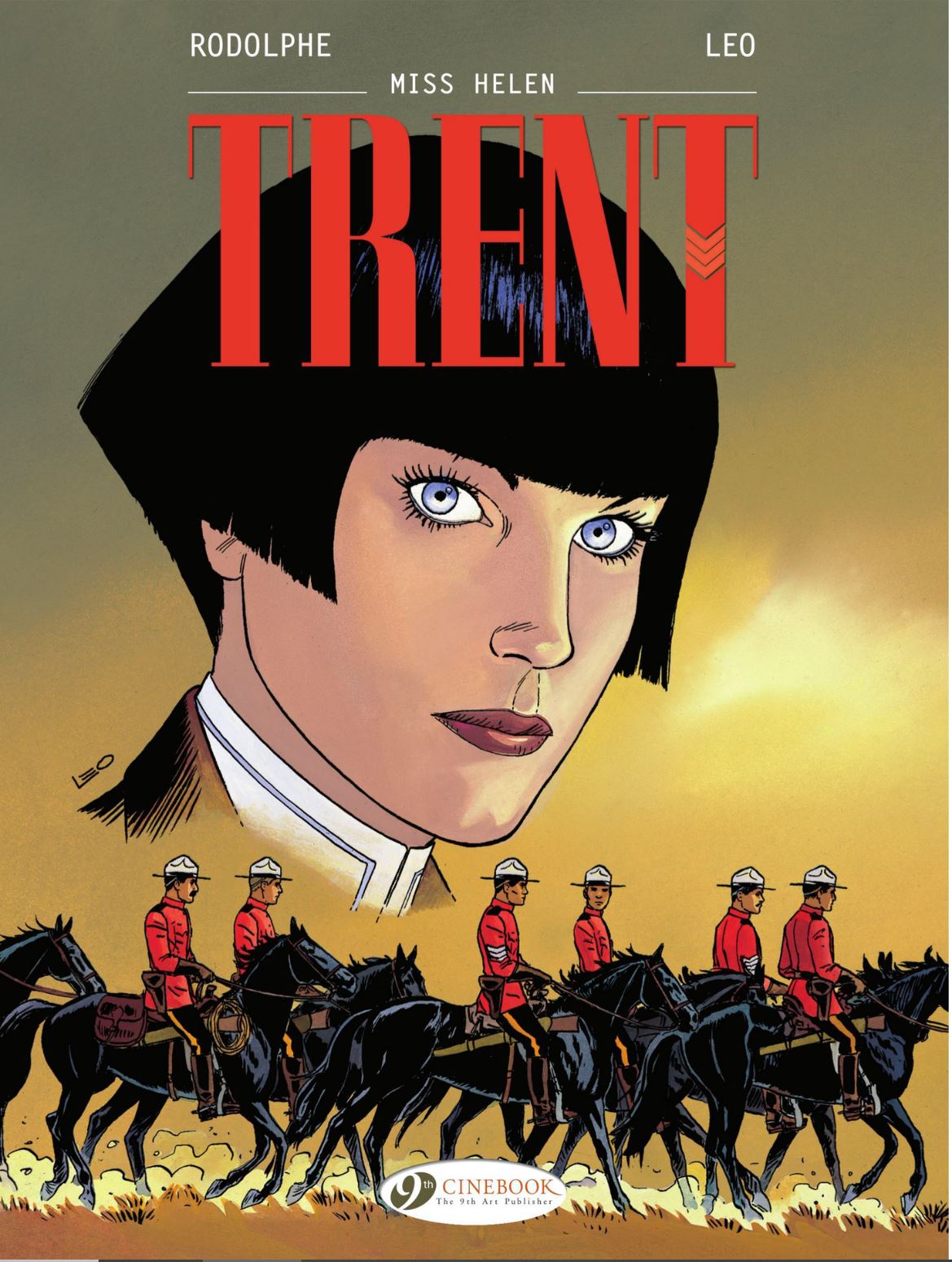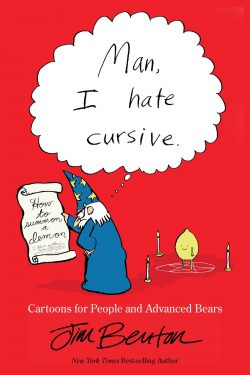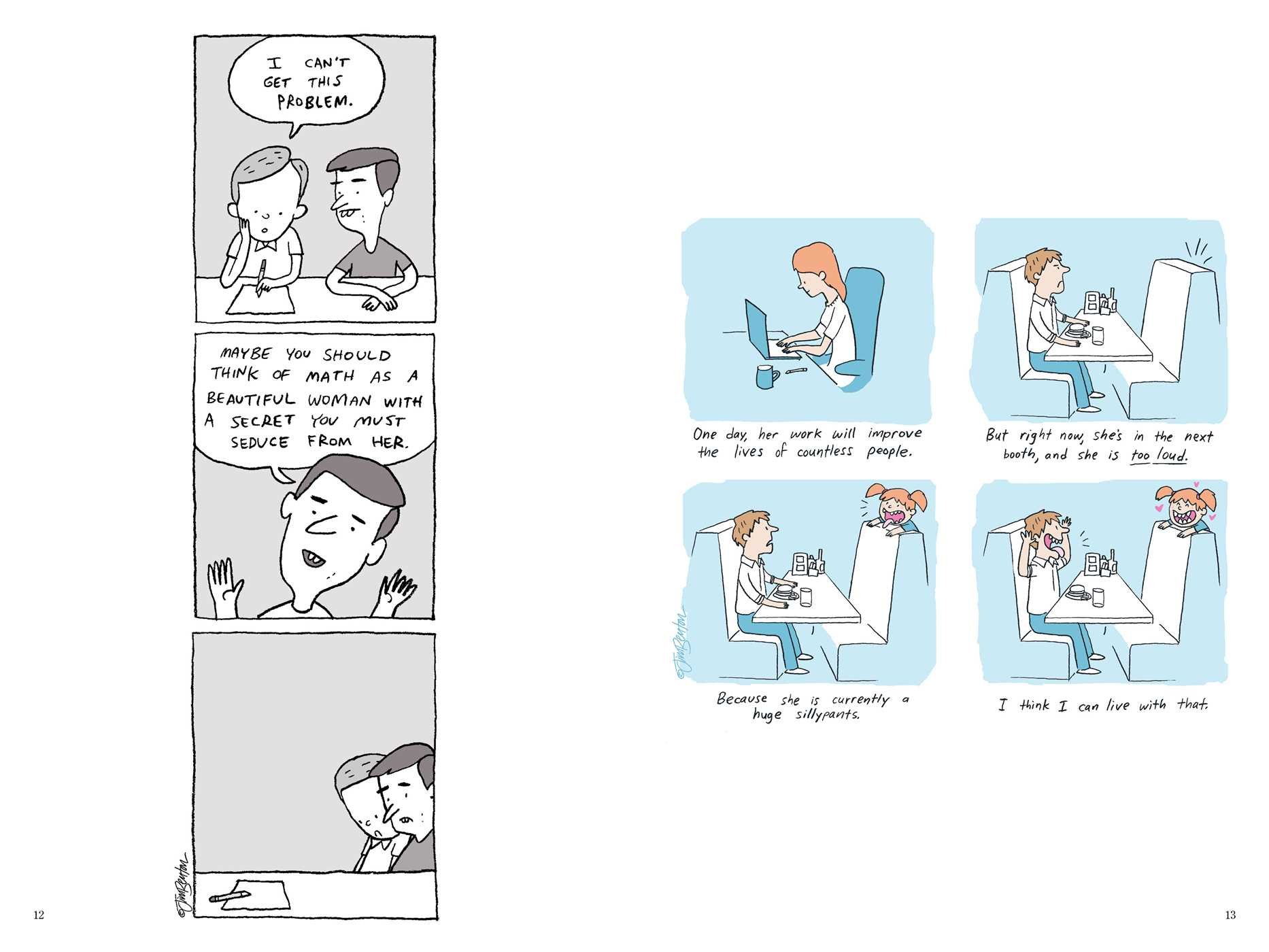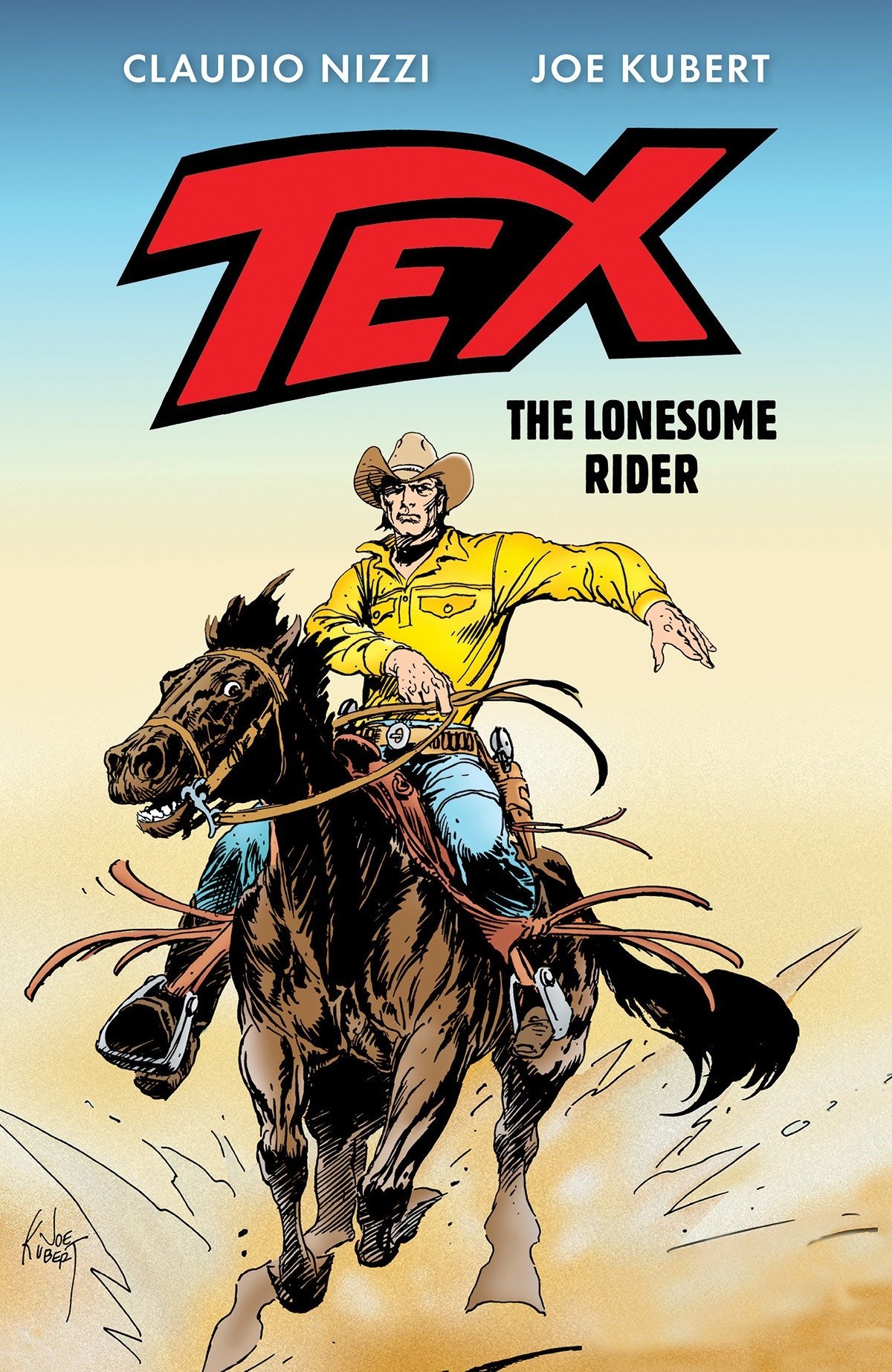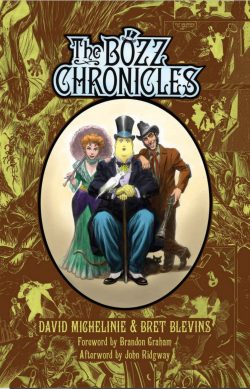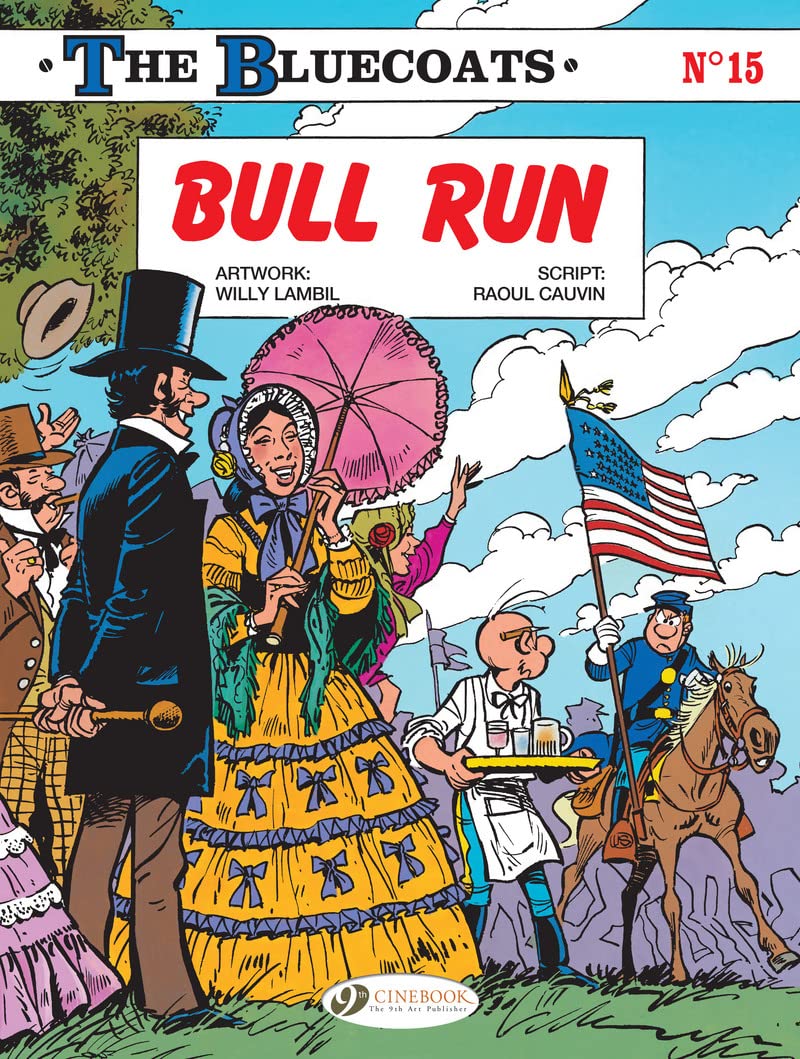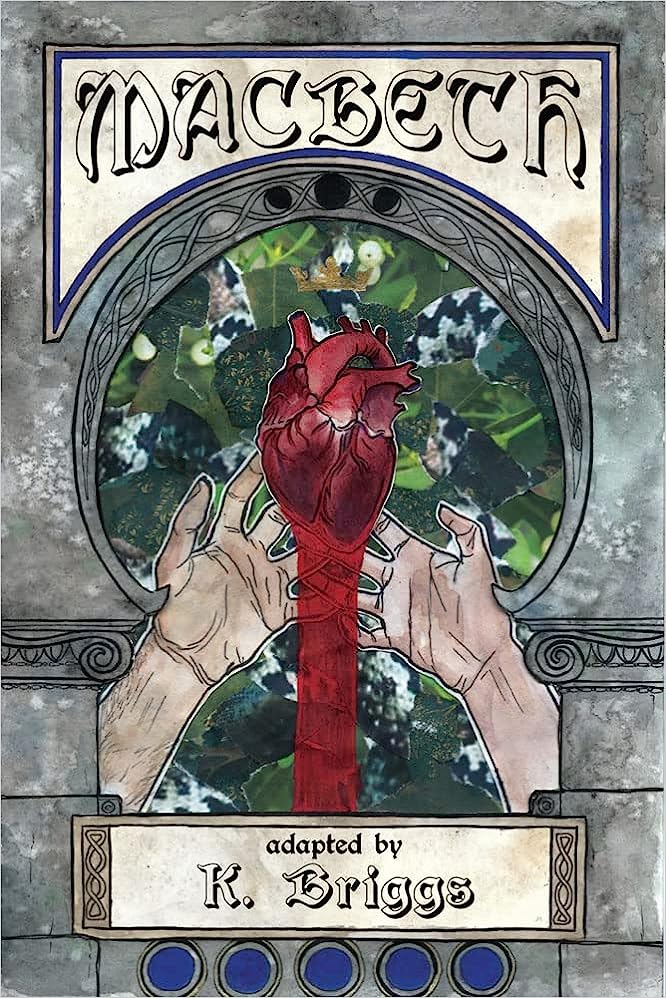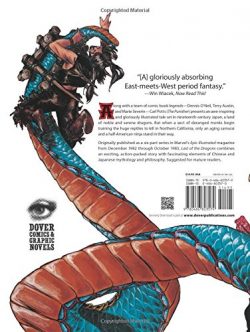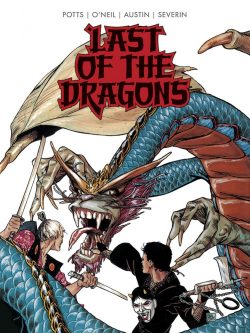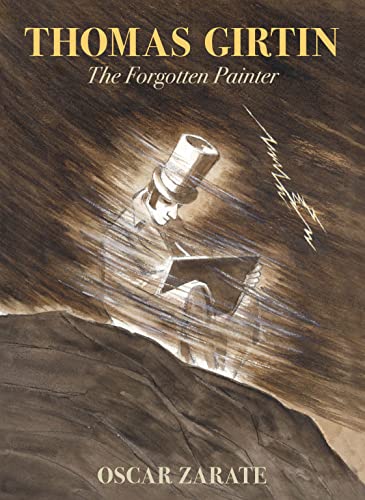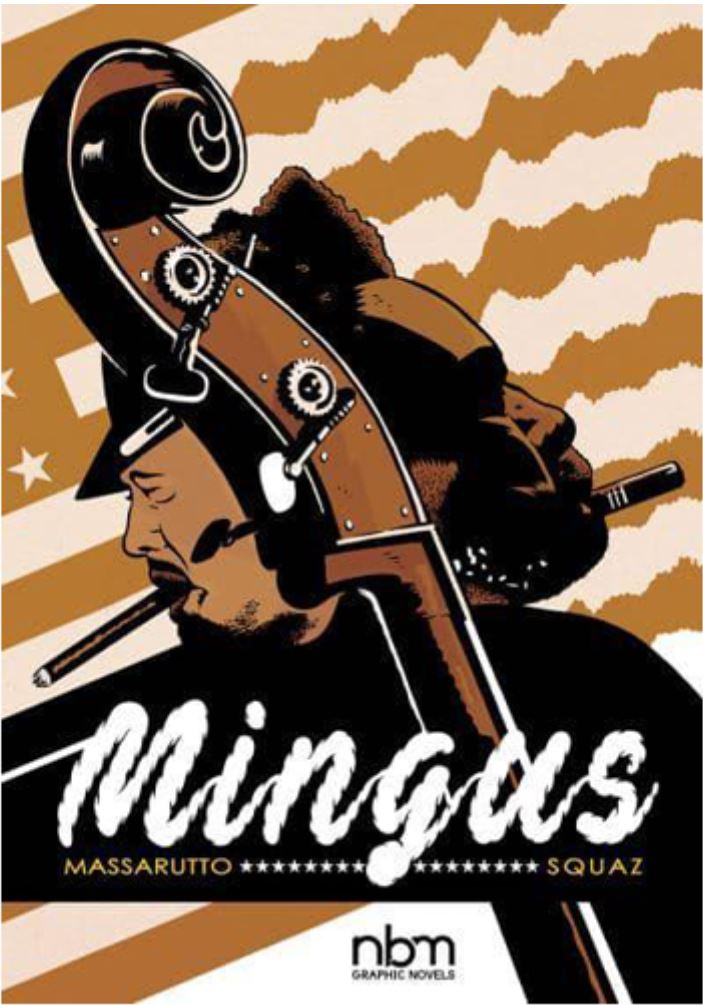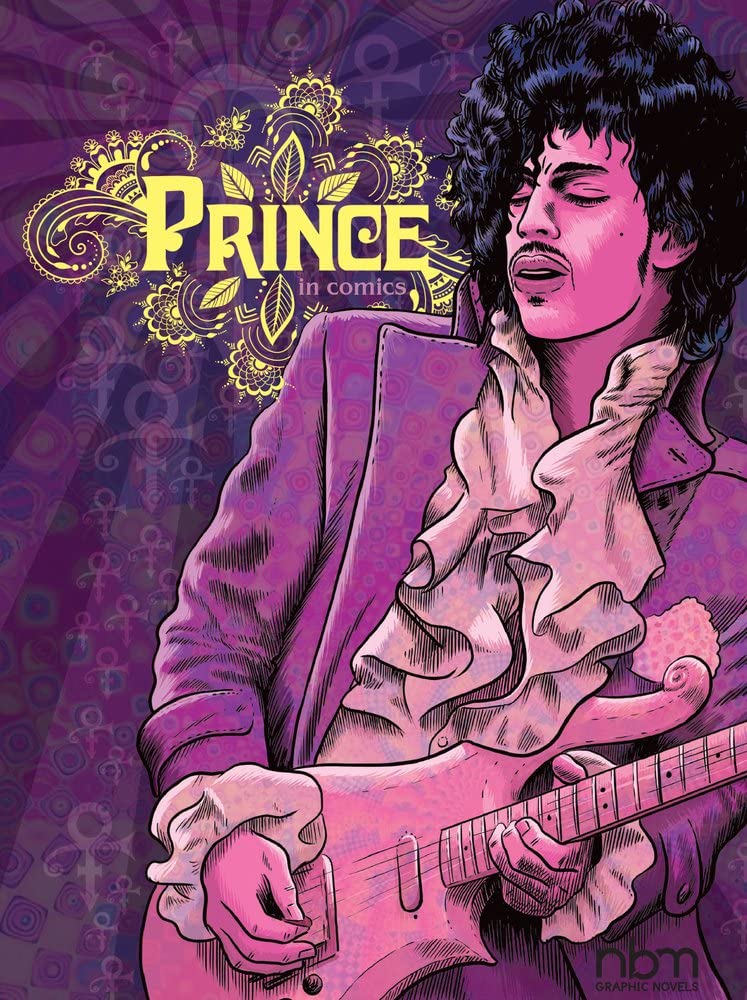
By Tony Lourenço (narrative) & Nicolas Finet (articles): illustrated by Joël Alessandra, Céheu, Christopher, Samir Dahmani, Anne Defréville, Samuel Figuiére, Baudouin Forget, Noémie Honein, Kongkee, Yvan Ojo, Christelle Pécout, Barrack Rima, Toru Terada, Léah Touitou, Martin Trystram, Yunbo & various and translated by Montana Kane (NBM)
ISBN: 978-1-68112-321-9 (HB) eISBN: 978-1-68112-322-6
Here’s another stunning rock biography: released continentally in 2021: the latest entry in NBM’s superb “…in Comics” sub-strand, exploring the many mysteries of a unique musical phenomenon who shook the world: a led performer who changed popular culture and modern society…
Gathered in this fetching account are context-providing, photo-packed essays bracketing individual comics sections. Here, each chronological article is written by author, filmmaker, journalist, publisher, educator and music documentarian Nicolas Finet – who has worked in comics for three decades, crafting Graphic Novels like Bowie in Comics and Love Me Please – The Story of Janis Joplin, as well as reference works like Mississippi Ramblin’ and Forever Woodstock. scripting the strip snippets in between is musician, performer, painter, author/travel writer and art photographer Tony Lourenço who prefers the mononym “Nyt”, transforming and dramatizing potentially dry facts for a horde of artists to spectacularly realise in comics vignettes…
Our baroque journey begins with the scene-stealing front man as, limned by Christopher, ‘The 1960s: Way Up North’ takes us to Minneapolis Minnesota to introduce child musical prodigy Prince Rogers Nelson, born on June 7th 1958, and the warring parents who bequeathed him astounding gifts, a miniscule frame and lifelong insecurities. Following divorce the kid met his first long term musical accomplice at Bryant Junior High, as seen in Yunbo’s ‘The 1970s: André and Me’, and how Prince joined his pal’s far happier family.
As they moved further into sounds and formed early bands, Samir Dahmani details ‘1975-1978: The Gift of Music’ with André sharing his own dream as the boys cut that crucial first album…
Realised by Céheu, ‘1977-1978: The Art of Standing Your Ground’ shows how the young genius secures a nigh-impossible deal with Warner Bros Records (WEA) for a 3-record deal and blows it all on new technologies and getting even better at every aspect of his obsession, consequently making more music to die for…
The next phase of his rise is dissected in ‘1979-1980: A Star is Born’ limned by Christelle Pécout exploring the transition from studio savant to stage god, after which Joël Alessandra peeks at ‘1980-1983: Sex, Etc.’ dealing with Prince’s disastrous gig supporting the Rolling Stones and the lessons learned. Always courting controversy and perpetually reinventing himself, the drive to shock intensified, and the release of double album 1999 finds the music man becoming impresario of a clan of interrelated bands and core collaborators on stage and in the studio resulting in ‘1984: Revolution Under a Purple Rain’ (rendered by Martin Trystram). Having mastered the movie sector, ‘1985: Jammin’ With Sheila’ by Samuel Figuiére diverts to deconstruct crucial percussion potentate and most significant other Sheila Escovado before returning to roots and constructing his personal performance pleasure dome, as revealed by Baudouin Forget in ‘1986: Paisley Park’.
With a stable base to build and transform from, ‘1987-1988: Consecration: Sign o’ the Times’ – by Yvan Ojo – steps away to Paris to view the creation of the landmark album and tour through the eyes of a certain fan before Hollywood calls – or is it receives? – notification of fabulous film action in Anne Defréville’s ‘1989: Prince and the Movies: Batman’ (with cameos from Tim Burton and Jack Nicholson)…
Twelve years into a glittering career and promoting the era of a New Power Generation, ‘1991’: Diamonds and Pearls’ (Pécout) finds Prince at the top of the world before that old contract causes fresh grief in ‘1992-1997: Tough Times…’ as delineated by Barrack Rima.
Toru Terada’s art opens the period signified by a graphic symbol and the acronym TAFKAP in ‘1998-2000: …And Rebirth’ as the star in self-exile explores the burgeoning universe of the World Wide Web. He also changes religions in ‘2001-2002: As God is my Witness…’ (Noémie Honein). Thereafter Samuel Figuiére orchestrates ‘2004-2006: The Comeback’ whilst Christopher recaptures ‘2007: The Greatest Show in the World’ and Kongkee details the beginning of a new musical legacy in ‘2009: Prince Producer’ before Léah Touitou traces his return to basic principles for ‘2013-2015: 3RDEYEGIRL’.
Then, just as it was then, there’s a sudden surprise end as detailed by Barrack Rima in ‘2016: The End of All Songs’…
Each cartoon encapsulation is followed by Nicolas Finet’s context-packed mini-essays before this superb catalogue of hits closes with additional material including a ‘Select Discography’, ‘Films and Videos’, ‘On the World Wide Web’, suggested further ‘Reading’ and ‘Interviews and Articles’.
Prince in Comics is an astoundingly readable, beautifully rendered treasure for narrative art and music fans alike: one to resonate with anybody who wants to listen and look. If you love pop history and crave graphic escape, this will truly rock you.
© 2021 Editions Petit à Petit. © 2023 NBM for the English translation.
Prince in Comics is scheduled for UK release September 12th 2023 and available for pre-order now. Most NBM books are also available in digital formats. For more information and other wonderful reads see http://www.nbmpub.com/

